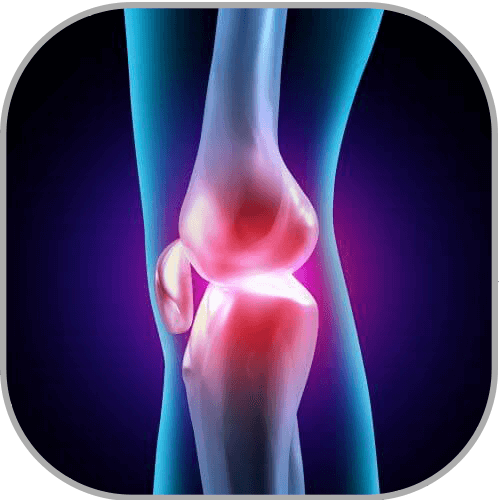
The knee is a hinge joint formed by the femur (thighbone), tibia (shinbone), and patella (kneecap). Ligaments, tendons, cartilage, and surrounding muscles work together to provide stability, allowing the knee to bend, straighten, and rotate slightly while supporting your body weight.
When one or more of these stabilizing structures are damaged, weakened, or overly loose, the knee may feel unstable, “give out” during activity, or fail to support weight properly. This instability can interfere with daily activities, limit athletic performance, and increase the risk of further injury.
What is Knee Instability?
Knee instability occurs when the structures that stabilize the joint are compromised, allowing abnormal shifting or movement between the bones of the knee. This can happen suddenly due to injury or develop gradually over time.
Types and Causes of Knee Instability
Ligament Injuries – Damage to the ACL, PCL, MCL, or LCL caused by twisting, pivoting, or direct impact
Meniscus Tears – Cartilage damage that affects the knee’s ability to absorb shock and maintain stability
Patellar Instability – Recurrent dislocation or partial dislocation (subluxation) of the kneecap
Degenerative Changes – Arthritis and cartilage wear that reduce joint stability
Muscle Weakness or Imbalance – Insufficient support from surrounding muscles due to injury, surgery, or inactivity
Knee Dislocation and Subluxation
A knee dislocation occurs when the bones of the joint are completely forced out of alignment. A subluxation is a partial dislocation in which the bones shift out of place but not completely. Both can cause pain, swelling, and a feeling that the knee cannot be trusted to hold weight.
Symptoms of Knee Instability
Sensation of the knee “giving way”
Pain during movement or weight-bearing
Swelling and stiffness
Limited range of motion
Difficulty with pivoting, running, or quick directional changes
Treatment Options for Knee Instability
Diagnosis begins with a physical exam and often includes imaging such as X-rays or MRI to assess the extent of damage.
Non-surgical treatment may include:
Bracing to provide external stability
Anti-inflammatory medication to reduce pain and swelling
Physical therapy to strengthen muscles and improve joint control
Activity modification to avoid high-risk movements
Surgical treatment may be recommended if instability is severe, recurrent, or associated with significant structural damage. Procedures may include:
Ligament Reconstruction – Replacing a torn ligament such as the ACL with a graft
Meniscus Repair – Restoring damaged cartilage for shock absorption and stability
Patellar Stabilization – Realignment or reconstruction to prevent kneecap dislocation
Cartilage Restoration Procedures – Repairing or regenerating damaged cartilage to improve joint mechanics
How We Can Help
At Towson Orthopaedic Associates, our fellowship-trained surgeons offer both minimally invasive and open surgical options for knee instability. Our approach emphasizes restoring joint stability while preserving as much natural tissue and function as possible. For many patients, targeted rehabilitation and preventive strategies can reduce the risk of re-injury and help maintain long-term knee health.
If your knee feels unstable or gives out during activity, contact Towson Orthopaedic Associates to schedule a consultation and explore your treatment options.



